Across and through the Bay: Rio, Niteroi, and Guanabara expeditions
Alexandra Fries ·On June 20th 2016, Bill Dennison, Dave Nemazie, and I traveled to Rio de Janeiro, Brazil, for the next stakeholder workshop to develop the Guanabara Bay Report Card. We convened the workshop on June 23rd in neighboring Niteroi, a city across the Bay from Rio de Janeiro. There were some of the same participants as our first stakeholder workshop as well as a wider group of stakeholders from additional universities and municipal government offices. On June 24th, we were lucky enough to take a boat ride out to see some of the polluted areas of the Bay.
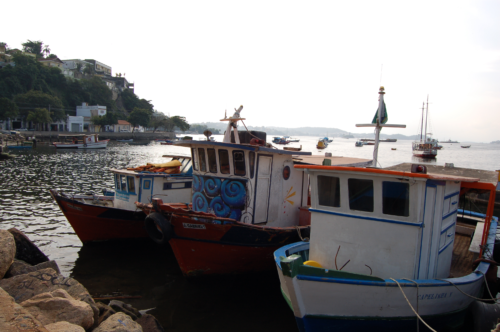
To open the workshop, one of our friends and colleagues, Axel Grael, who had visited Maryland years ago when we first began talking about creating a report card for Guanabara Bay gave a presentation. Axel Grael is the Vice Mayor of Niteroi.
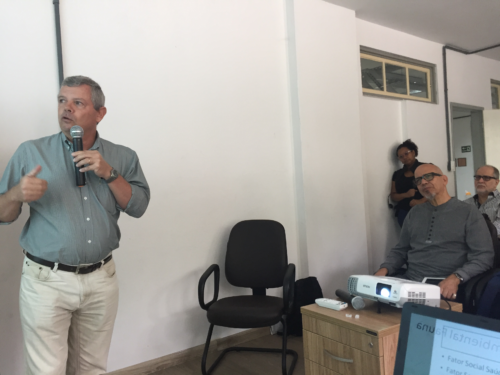
We then reviewed the stakeholder-based decisions that had been made during the first workshop, went over the selected values, threats, and key indicators, as well as went over the workshop newsletter and the subsequent survey results that we received. The group discussed some of the indicators selected, as well as raised new ideas that hadn’t been heard in the previous meetings, such as the need for an indicators of organic compounds (PAHs, hydrocarbons), and climate change (sea level rise).
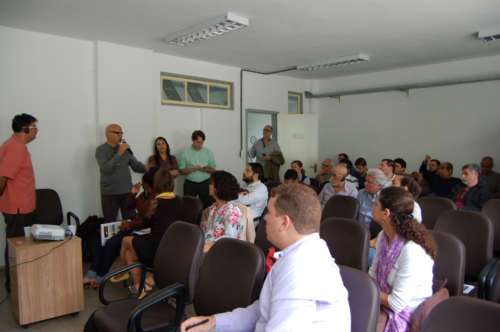
Communication is one of the key areas of concern that is a constant topic during these workshops. Having clear, concise, and transparent messaging around not only the report card, but also the restoration work for Guanabara Bay is integral to the stakeholders. The communication not only informs the public and increases the dialogue about what is occurring, but also serves to create a shared vision and shared responsibility for engagement. The people working on the ground to restore Guanabara Bay also want the public to feel the sense of belonging that the Bay is there for them and that their actions affect it. Positively and negatively.
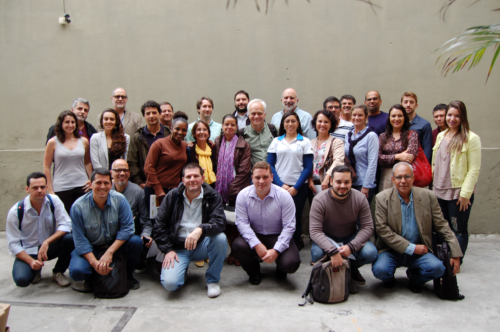
A day after the meeting, we were able to go out on a fishing boat on Guanabara Bay to see some of the threats plaguing the waters. It was a cloudy and overcast day, but the weather held enough that we were able to see some interesting parts of the Bay, besides the areas we saw on the ferry ride to Niteroi. We headed off out of a boat club on Governor’s Island, where the international airport is located.

Fishermen want to develop an abandoned island into a fish hatchery and research center. An oil company abandoned the island twenty to thirty years ago.

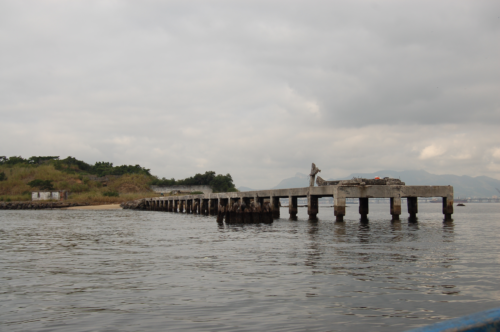
Many large oil companies have operations out of Guanabara Bay. We passed a number of different companys’ locations. We also passed by an area where there had recently been an oil spill.

Birds such as cormorants are plentiful in Guanabara Bay. After one oil spill in the Bay that caused a lot of pollution, the cormorants took up residence in a new area. Their excessive numbers and guano has killed the trees in this part of the forest.
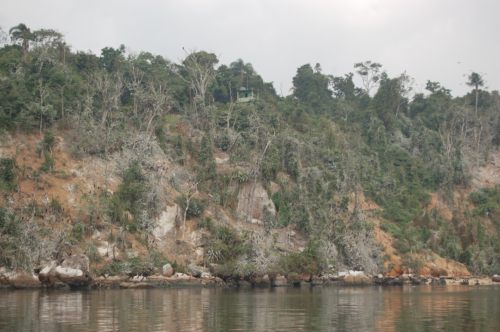
We stopped briefly to drop off a fisherman who was traveling with us on the boat. The village where we ended up is what I expected more of Rio’s and Guanabara Bay’s neighborhoods to look like. Dilapidated, but colorful, with poor waterside buildings flanked by beach back yards littered with refuse, and roaming packs of dogs.

Some of the most beautiful sights in Guanabara Bay were the eerie wooden fish traps standing like sentinels in the smooth glassy water. These traps of wood poles guide schooling fish along them and then wind in a spiral, confusing the fish and trapping them. Although the pollution in Guanabara Bay hurts the fish populations, fishing is still an important and valuable service the Bay provides.
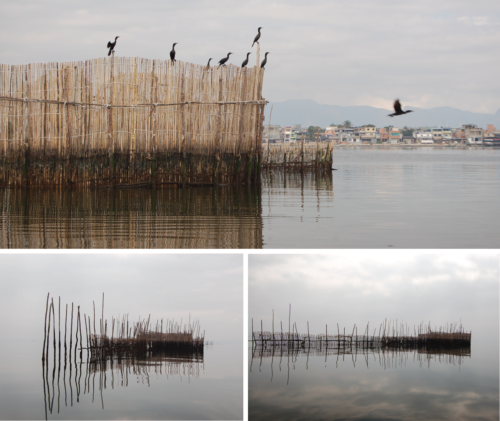
About the author
Alexandra Fries

Alexandra is a Program Manager at the Integration and Application Network (IAN) based at the University of Maryland Center for Environmental Science in Annapolis MD. Alexandra’s work in environmental management has been focused on assessment, monitoring, and management of aquatic, marine, and terrestrial ecosystems. Alexandra has extensive experience in data analysis, synthesis, mapping, interpretation, and communication. Alexandra has experience working with a diverse group of partners including those in local, state, and federal government, non-governmental organizations, non-profit organizations, private industry, and academia. Within IAN, Alexandra conducts data analysis, synthesis, and communication by completing environmental report cards, updating the IAN website, and conducting science communication courses. Alexandra also creates science communication materials such as diagrams, posters, presentations, newsletters, and reports using Adobe Creative Suite, Microsoft Office Suite, and ArcGIS. Alexandra has experience managing projects and staff on local and international projects, liaising directly with partners and colleagues, and providing insights on project direction and goals.